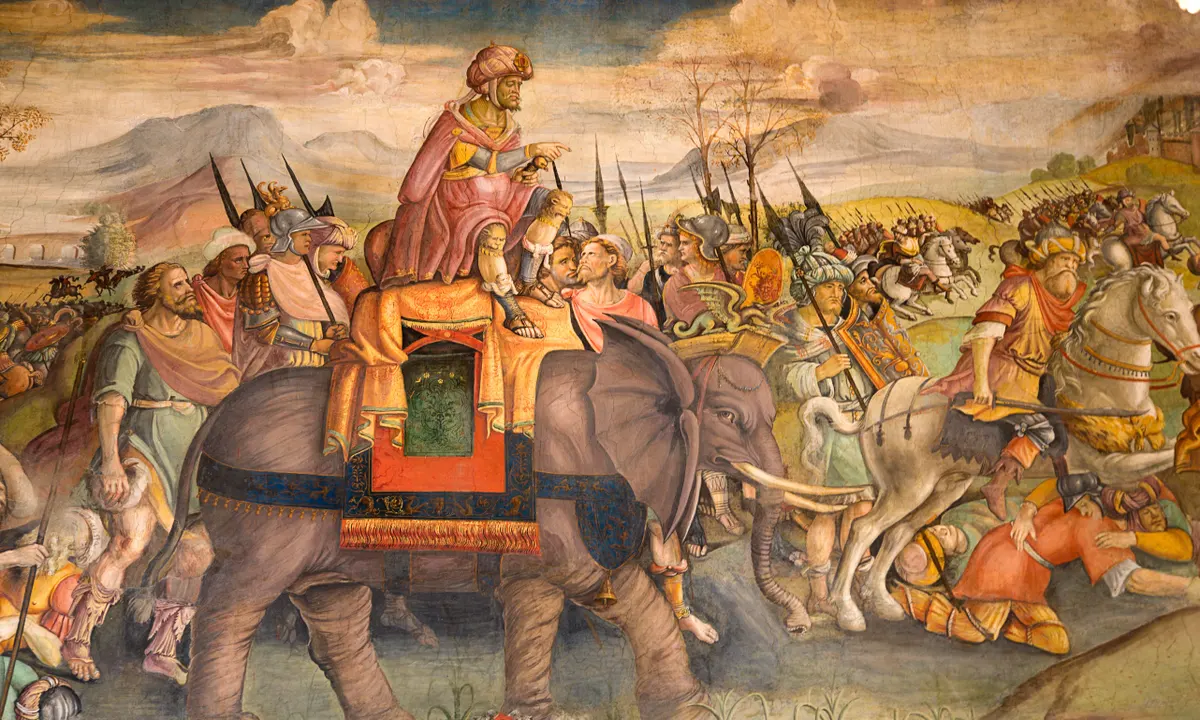
Carthage, the mighty city-state nestled on the North African coast in present-day Tunisia, once stood as a formidable power that played a crucial role in shaping Mediterranean history. Known for its maritime prowess, advanced civilization, and strategic location, Carthage left an indelible mark on the ancient world. One of the most iconic chapters in Carthaginian history unfolded during the Second Punic War when Hannibal, a brilliant Carthaginian general, executed a daring and unprecedented military maneuver.
The Second Punic War (218-201 BCE) was a pivotal conflict between the Roman Republic and Carthage, and it was during this tumultuous period that Hannibal Barca rose to prominence. Hannibal, with an audacious military strategy, decided to take the fight directly to Rome by embarking on a treacherous journey through the Alps – a feat that would go down in history as one of the most daring military maneuvers of antiquity.
In 218 BCE, Hannibal, leading a Carthaginian army, crossed the daunting Alpine mountain range, a Herculean task compounded by harsh weather, treacherous terrain, and the colossal challenge of transporting war elephants. The use of elephants in warfare was an innovation that shocked and awed Hannibal’s adversaries, as these majestic creatures trudged through the rugged landscape, leaving an indomitable impression on both friend and foe.
The Alpine crossing was a masterstroke that caught the Roman Republic off guard, challenging their military might and strategic calculations. Hannibal’s audacity and tactical brilliance not only showcased Carthaginian military prowess but also underscored the city-state’s determination to confront the Roman juggernaut on its own turf.
The ensuing battles of the Second Punic War, notably the iconic Battle of Cannae in 216 BCE, witnessed Hannibal employing innovative military tactics that exploited Roman vulnerabilities. Although Hannibal ultimately did not achieve a complete victory over Rome, his campaign across the Alps and subsequent successes on the battlefield highlighted Carthage’s resilience and military acumen.
Carthage’s prominence in the ancient world extended beyond military exploits. As a maritime power, the city-state controlled vital trade routes in the Mediterranean, fostering economic prosperity and cultural exchange. Carthaginian influence reached as far as Spain, Sicily, and North Africa, making it a key player in the interconnected web of ancient civilizations.
Despite its illustrious history, Carthage faced a tragic fate. The conclusion of the Third Punic War in 146 BCE saw the complete destruction of Carthage by the Romans, who razed the city to the ground. The once-mighty Carthaginian civilization was erased from the map, leaving behind echoes of its greatness in the annals of history.
Today, the legacy of Carthage lives on in archaeological sites scattered across Tunisia, providing glimpses into the grandeur of this ancient city-state. The daring Alpine crossing by Hannibal remains a testament to Carthage’s audacity and the enduring allure of its contributions to Mediterranean history.
